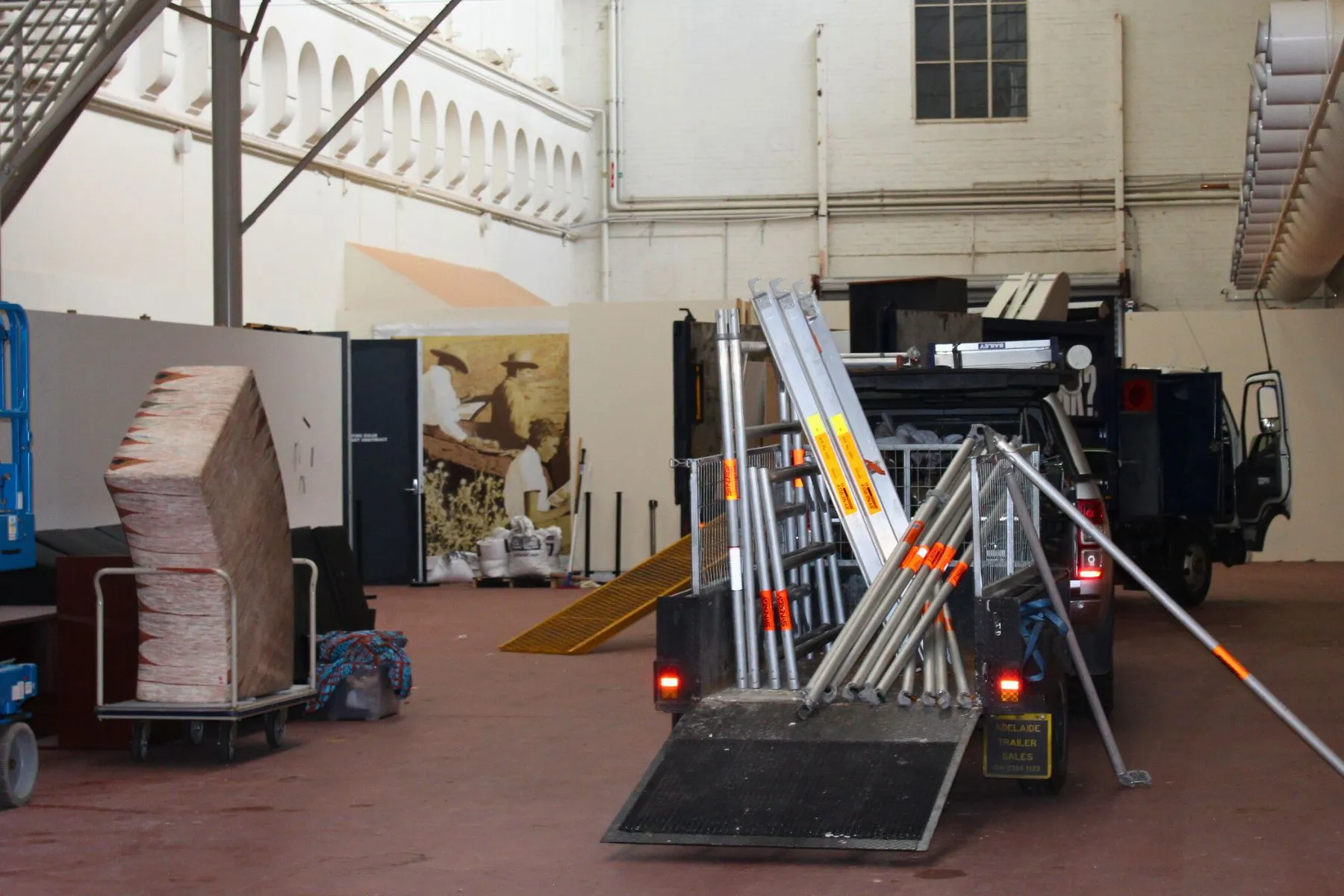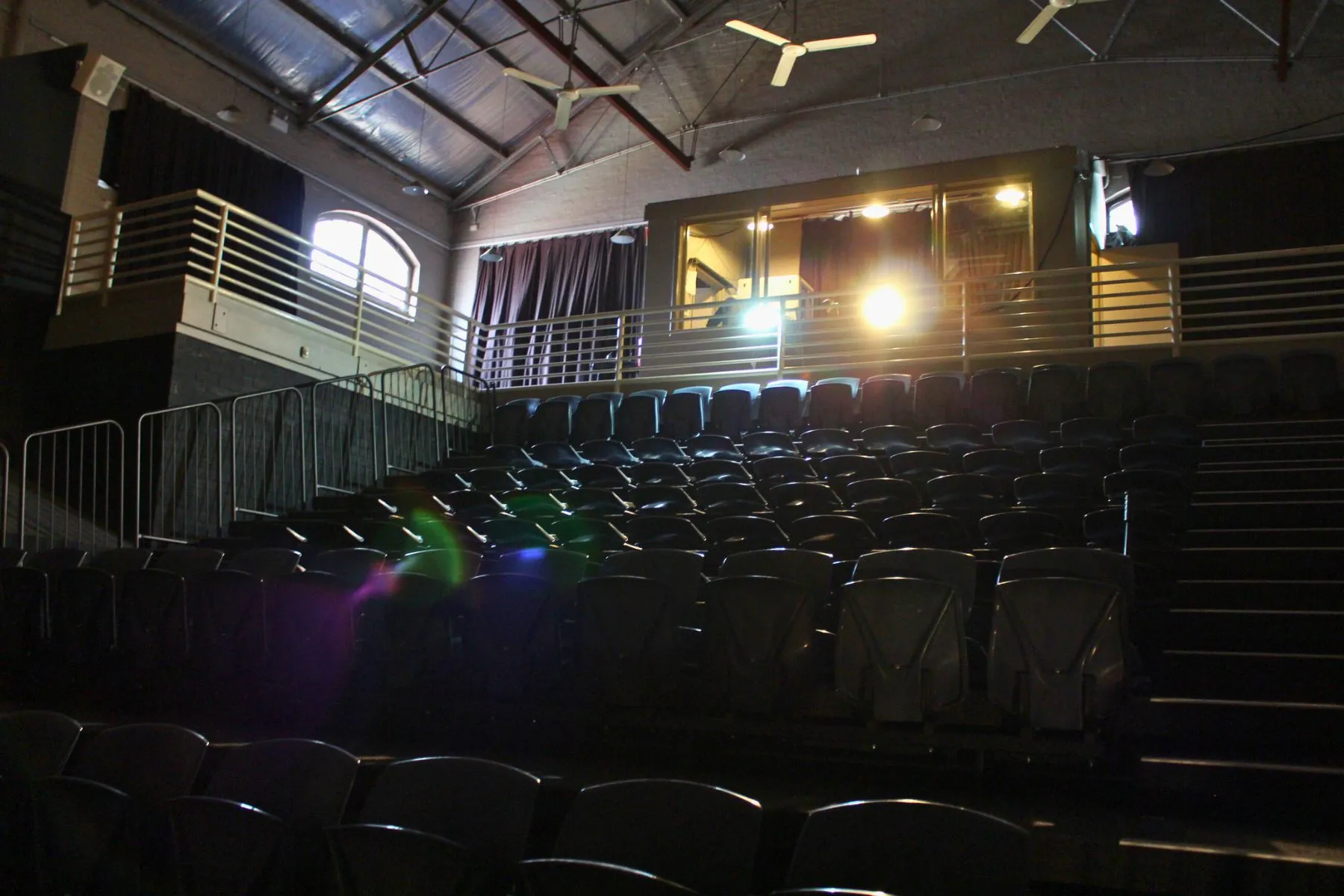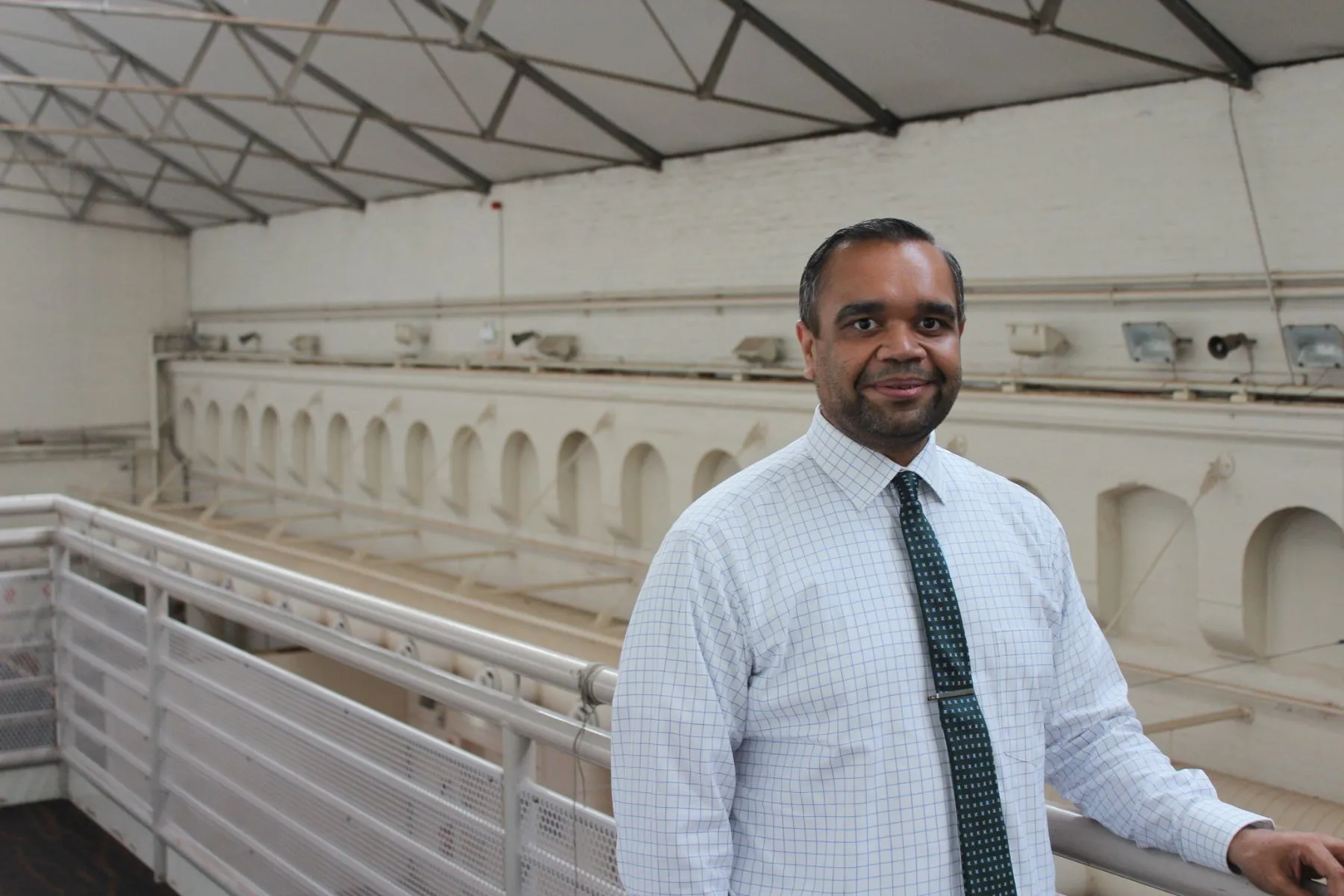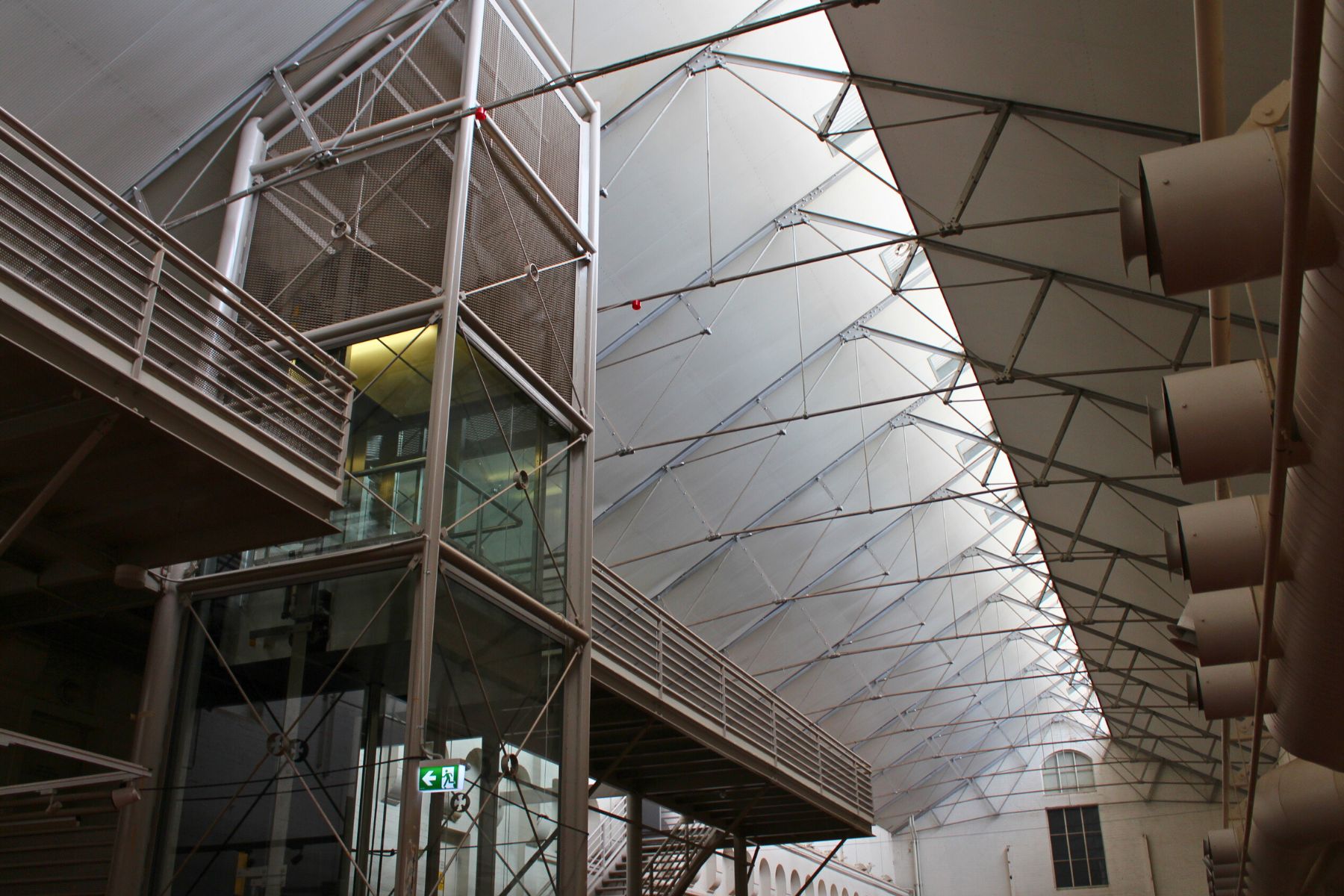New CEO plots rebirth after two-year Tandanya shutdown
The long-awaited reopening of Adelaide’s National Aboriginal Cultural Institute is happening in February. InDaily took an exclusive tour of the renovated building as the CEO shared ambitious plans for the heritage site that are not “up there with the fairies”.

Having undergone a major renovation and structural refurbishment, the National Aboriginal Cultural Institute at the corner of East Terrace and Grenfell Street is in the final stages of a rebirth ahead of a planned reopening in February.
But storage of 3000 Indigenous art pieces and artefacts remains a challenge, says new CEO Brenz Saunders, who continues to search for a more permanent solution for the precious items Tandanya has in its possession.
Tandanya has a fresh lick of paint on the interior walls of its heritage-listed building that was once the city’s Grenfell Street Power Station – and Saunders says he is optimistic about the institute’s future and is not shying away from the remaining problems he’s still to solve.
In collaboration with Adelaide Fringe hub Gluttony, Tandanya will host performances from February for the arts festival via a program with 55 per cent Indigenous representation.
There are opportunities in the future for the site to be more than just a gallery, said Saunders, who has only been in the job for one month, as well as chances to generate revenue by partnering with other Indigenous organisations and hospitality operators.
It has been a long wait to see life breathed back into the imposing red-brick building opened as an Aboriginal-owned multi-arts centre in 1989 and named after the Kaurna word for red kangaroo place.

InDaily first reported in July 2023 that Tandanya was closed temporarily, and the CEO at the time Phillip Saunders (who is not related to Brenz) assured it would reopen in two or three weeks.
That never came to pass, as more information about the state of Tandanya was revealed via annual reports.
There were issues “of a magnitude unusual for an organisation of its size”, one annual report read, which cited the expense and complexity of maintaining the Grenfell Street site as one reason behind its prolonged closure.
You might like
One year later, the state government announced it would spend $780,000 on repairing the institute. Funding was directed towards renovations of the building – owned by the Aboriginal Lands Trust – including replacing air-conditioning units and sprinkler heads, work on internal walls to address deterioration, electrical work, painting multiple rooms and replacing carpets.
These works are now completed, Saunders told InDaily. Most of the issues related to the part of the building that faced Grenfell Street, while the large gallery space in the middle – currently a site for tradies and their utes – was largely good to go after a bit of a tidy.

The theatre space too remained fully operational despite having been untouched for the better part of three years, and a workshop space out the back of the institute will be cleared – Saunders is pondering how to give this space a new lease of life.
After a tour of the institute, during which we dodged tradespeople and entered still-cluttered spaces yet to be cleared out, the CEO who also sits on numerous SA boards, spoke candidly of the task ahead of him.
“I’m feeling ambitious, but with a sense of reality,” says Saunders, who was born in Ceduna but moved to Adelaide for boarding school.
“I’m not lost by the task that’s ahead of me, and I’m not up there with the fairies trying to build a fake wonderland that is Tandanya. I’m being very realistic.”
He says the maintenance and structural challenges took about two years to address, one year involving a heritage assessment and another the actual refurbishment work.
The $780,000 of government money for the renovations was now exhausted, with Saunders hoping Tandanya can “do what we can as an organisation to showcase that giving back through other means and programs and activities”.
This includes Tandanya’s partnership with Gluttony. Saunders says the festival hub would hire the Tandanya theatre during Fringe and he is “excited to explore where it could take us long term”.
“It’s a program of events that has about 55 per cent First Nations performers which is something that Gluttony has committed to on their own right in wanting to grow the representation of Aboriginal people in the festival space,” he says.

Beyond that, Saunders hopes to bring back Spirit Festival – a defunct festival of Indigenous culture – and more broadly have a calendar of events for the Aboriginal community “that celebrate the culture of the state”.
There are some final construction works still to be completed before Christmas along with the re-homing of priceless art and artefacts.
Stay informed, daily
During renovations on the northern wing of Tandanya, the institute’s 3000 pieces had to be moved temporarily into parts of the building not particularly ideal for storage. Saunders says they will return to a purpose-built space once final construction works are completed.
“It’s a collection over many years of paintings, artefacts, wood carvings, ancient stones, spear tips, ochre making stones,” Saunders says.
“The collection is so diverse purely because of donations from people or exhibitions that have taken place where people have simply said ‘keep it’.
“It is a challenge for Tandanya to go through that process of provenance. Where has it come from? As an organisation, we’ve never historically, from what I understand, taken on the role of collector or holder of assets like that. It just ended up like that.”

He said a staged approach to an audit of the collection was on the cards, and he hoped to work with the museum and storage facility operators to see “how we can best look after and care for the artefacts that we have”.
“That’s probably the first big project that I had to lead and manoeuvre with the state government,” he says.
“It’s been quite an interesting month and I think there’s a long road ahead.
“Most people would probably ask ‘am I scared?’. No. I don’t have any mindset or appetite for turning away from or leaving the role. Every day is exciting.
“I’m very mindful of the responsibility I have to map out a plan led by the board and I’m up for the challenge.”
Meanwhile, the state government is yet to make meaningful progress on its stalled Tarrkarri project at Lot Fourteen on North Terrace.
The Tarrkarri project would house tens of thousands of Indigenous art treasures and artefacts, and is yet to be built, while the government attempts to lock in some sort of funding to cover the price of the building, estimated at some $400-600 million.

Saunders says Tandanya was still “waiting for an outcome” on Tarrkarri.
“I represent this building and this organisation would love to see a shared appreciation and investment,” he says.
“If they intend to do such an investment on North Terrace, they would do a similar investment here, given we share that responsibility of showcasing Aboriginal culture to the state.”
Arts Minister Andrea Michaels welcomed the news of Tandanya’s imminent reopening.
“It’s fantastic that Tandanya will soon be reopening following the significant investment by the Malinauskas Government,” she said.
“I look forward to its doors being back open and for it to continue to showcase the works of Aboriginal and Torres Strait Islander artists for generations to come.”









